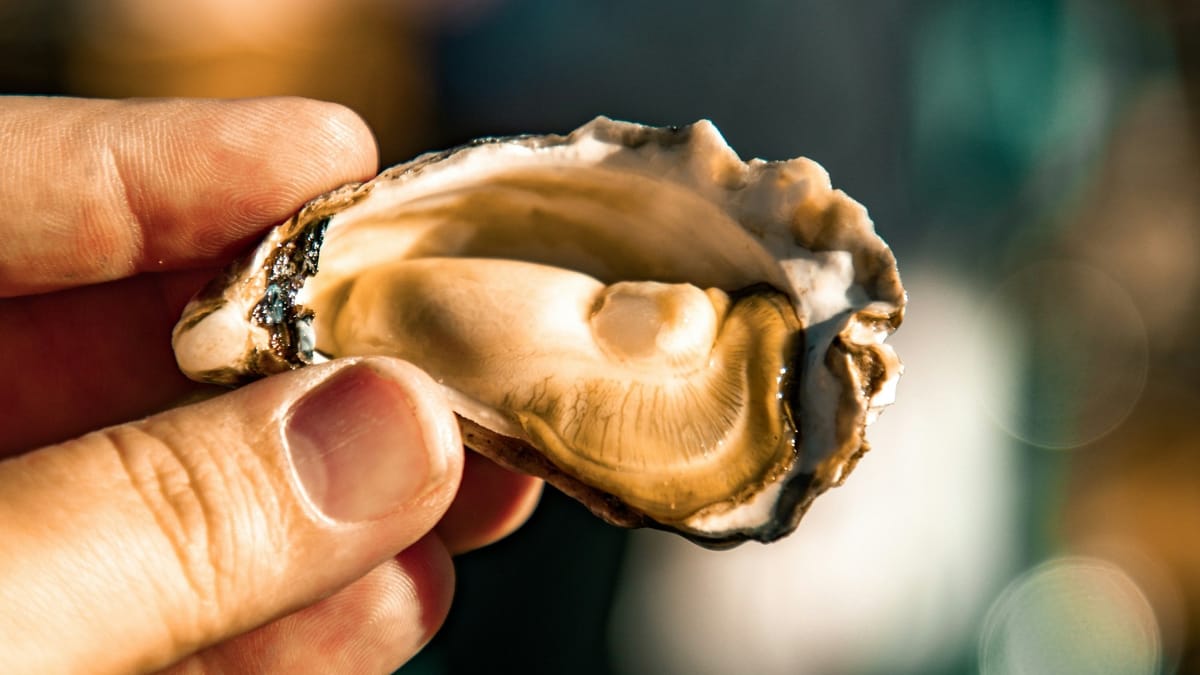How Australian Oysters Could Help Us Beat Drug-Resistant Superbugs
Imagine if the secret to combating drug-resistant superbugs lay in the blood of an Australian oyster. Could this unusual discovery offer a new weapon in our fight against these deadly infections? Stay tuned as we dive into the fascinating science behind this potential game-changer.

What if the key to defeating drug-resistant superbugs could be found in the blood of an unassuming Australian oyster? Could the blood of Australian oysters hold the key to stopping drug-resistant infections? This new discovery might be a game-changer in the battle against superbugs.
Imagine if the answer to one of medicine’s biggest threats was hiding in the blood of an oyster. That’s exactly what Australian researchers have discovered: a unique protein in the Sydney rock oyster that could help fight drug-resistant superbugs.
Antimicrobial resistance is a growing global problem. As more bacteria become resistant to antibiotics, common infections are getting harder to treat, putting millions of lives at risk. The search for new ways to fight these “superbugs” has become urgent, and surprising sources are now being explored.
Recently, scientists found that a protein in the haemolymph (the oyster’s version of blood) of Sydney rock oysters can kill dangerous bacteria like Streptococcus pneumoniae and Streptococcus pyogenes, which cause illnesses such as pneumonia and strep throat. Even more impressive, when this oyster protein is used together with antibiotics like ampicillin and gentamicin, it can make these drugs much more effective-even against tough bacteria like golden staph and Pseudomonas aeruginosa.
Another exciting discovery is that this protein can break down biofilms. Biofilms are sticky layers that bacteria form to protect themselves from antibiotics, making infections much harder to treat. By breaking up these biofilms, the oyster protein helps antibiotics do their job better.
Of course, this research is still in the early stages. Scientists need to learn more about how to purify the protein, how it works, and how it could be safely used in medicine. It’s also important to note that eating oysters won’t have the same effect, and there are safety concerns with raw seafood.
Still, this offers hope that nature might provide new tools to help us win the fight against superbugs.
The Power of Sydney Rock Oysters: A New Protein Weapon Against Antibiotic-Resistant Bacteria
The discovery of a powerful antimicrobial protein in the haemolymph of Sydney rock oysters (Saccostrea glomerata) marks a significant advance in the search for new solutions to antibiotic-resistant infections. Researchers isolated a semi-purified protein extract from the oyster’s haemolymph-a fluid analogous to blood in invertebrates-and found that it exhibits potent antibacterial properties. This protein, part of a group known as antimicrobial peptides, was shown to be highly effective against key respiratory pathogens, specifically Streptococcus pneumoniae, which causes pneumonia, and Streptococcus pyogenes, responsible for strep throat and scarlet fever. Laboratory tests demonstrated that the protein alone could kill these bacteria at concentrations as low as 4.4 μg/mL for S. pneumoniae and 24.1 μg/mL for S. pyogenes, highlighting its strong bactericidal activity.
What makes the oyster protein particularly promising is its ability to work synergistically with conventional antibiotics. When combined with antibiotics such as ampicillin, gentamicin, trimethoprim, and ciprofloxacin, the protein enhanced their effectiveness by two- to 32-fold against a range of clinically significant bacteria, including not only Streptococcus species but also Staphylococcus aureus, Pseudomonas aeruginosa, Moraxella catarrhalis, and Klebsiella pneumoniae. For example, the minimum bactericidal concentration (MBC) of ampicillin against S. pyogenes was halved when paired with the oyster protein, and a fivefold reduction in MBC was observed for S. aureus. This synergy means that lower doses of antibiotics could be used to achieve the same or even better results, which is crucial in slowing the development of further resistance.
A key aspect of the oyster protein’s effectiveness lies in its ability to disrupt bacterial biofilms. Biofilms are protective layers that bacteria form on surfaces, making them much harder to eliminate with standard antibiotics. The oyster protein not only prevents the formation of these biofilms but can also break down established ones, rendering the bacteria within more vulnerable to antibiotic treatment. This property is especially important for treating chronic and antibiotic-resistant respiratory infections, where biofilms play a major role in persistent disease.
The discovery of this oyster-derived protein opens new avenues for developing therapies that both directly kill bacteria and boost the power of existing antibiotics. Its demonstrated safety in human lung cells and stability at standard storage temperatures further underscore its potential as a future weapon in the fight against superbugs.
Research and Safety Challenges in Harnessing Oyster-Derived Antimicrobials
Translating this breakthrough into practical therapies presents several complex challenges. One of the foremost issues is the need for further research to isolate and purify the specific protein responsible for the observed antibacterial effects. At present, the studies have utilized semi-purified haemolymph extracts, which contain a mix of antimicrobial peptides. Which exact protein or combination of proteins delivers the most potent effect? Only through advanced purification and molecular characterization can researchers determine the structure, stability, and optimal conditions for this promising compound. Furthermore, do we fully understand how this oyster-derived protein kills bacteria or disrupts biofilms? Investigating its mechanism of action-whether it targets bacterial membranes, interferes with metabolic processes, or breaks down protective biofilms-will be critical for both maximizing its efficacy and minimizing potential side effects.
Another important consideration is the protein’s stability under various conditions. Laboratory results indicate that the antimicrobial activity of the oyster protein is significantly reduced by heat exposure, such as that encountered during cooking. This raises a key question: could the protein be formulated in a way that preserves its activity for medical use, or will its heat sensitivity limit its applications? Moreover, while the idea of consuming oysters for health benefits may be tempting, experts caution that eating raw or cooked oysters does not provide the same antimicrobial effects. The protein is likely to be broken down during digestion, and there are significant risks associated with consuming raw seafood, including foodborne illness.
Safety and ethical considerations extend even further. Oysters are filter feeders and can accumulate environmental contaminants such as heavy metals, toxins, or pathogens, especially in polluted waters. How can scientists ensure that any therapeutic product derived from oysters is free from these harmful substances? Rigorous purification and quality control processes will be essential to guarantee safety for human use. Additionally, what impact might large-scale harvesting of oysters for pharmaceutical purposes have on marine ecosystems? Sustainable sourcing and environmental stewardship must be prioritized as this research progresses.
While the potential of oyster-derived antimicrobials is undeniable, addressing these scientific, safety, and ethical challenges will be essential before this natural solution can be safely and effectively integrated into the fight against superbugs.
Expert Insights and the Future of Oyster-Derived Antimicrobials in Combating Superbugs
Professor Jonathan Iredell, a clinical microbiologist at the University of Sydney, recognizes the significance of antimicrobial proteins in the blood of Sydney rock oysters, noting that antimicrobial peptides like those found in oysters often possess unique mechanisms of action not seen in traditional antibiotics. How important is it to explore new types of antimicrobials as bacteria continue to develop resistance? Professor Iredell describes the oyster protein discovery as “an exciting prospect” because it broadens the arsenal available to fight drug-resistant bacteria, which pose an escalating global health threat. Likewise, Professor Branwen Morgan, who leads CSIRO’s antimicrobial resistance mission, highlights the protein’s ability to disrupt biofilms-complex bacterial communities that protect pathogens from both antibiotics and the immune system. Could targeting biofilms be the key to overcoming stubborn infections? Morgan emphasizes that any new treatment reducing reliance on conventional antibiotics is “worth pursuing,” especially in light of the growing prevalence of resistant infections worldwide. She also points to the sustainable production potential of these proteins through aquaculture, which could facilitate ongoing research and development.
Looking toward the future, the implications of this discovery are crucial. The oyster protein not only kills harmful bacteria directly but also enhances the effectiveness of existing antibiotics by up to 32-fold in laboratory settings. Could this synergy enable lower antibiotic doses and slow the spread of resistance? Experts agree that much work remains, including purifying the active proteins, understanding their mechanisms in detail, and conducting rigorous animal and human studies to ensure safety and efficacy. What challenges must researchers overcome to bring such natural compounds from the lab to the clinic? Collaboration among scientists, pharmaceutical companies, and aquaculture industries will be essential to transform this promising discovery into practical treatments. Moreover, this breakthrough highlights the untapped potential of marine life in addressing urgent medical challenges.
By killing bacteria, breaking down protective biofilms, and boosting antibiotic power, these proteins could become vital tools against antimicrobial resistance. Are we ready to invest the necessary resources and foster collaboration to fully realize this potential? Continued research, innovation, and partnership across disciplines will be critical as the world seeks effective solutions to this growing threat.
Mark’s Moment: Discovering Hope in an Oyster’s Secret
Mark was always the kind of guy who loved stories, especially the ones that made complex ideas feel real. When he first heard about the discovery of an antimicrobial protein in Sydney rock oysters, he was intrigued but skeptical. How could something as simple as oyster blood help fight dangerous superbugs? But then, Mark’s perspective changed during a visit to a local seafood market. Watching the oysters being harvested, he realized that nature often holds unexpected solutions to human problems. It reminded him of the countless times he’d underestimated everyday things, only to be surprised by their hidden value.
This discovery wasn’t just another scientific headline for Mark; it was a reminder that innovation often comes from the most unlikely places. He thought about the millions affected by antibiotic-resistant infections and how this oyster protein might one day save lives by boosting antibiotics and breaking down stubborn bacterial defenses. It made the abstract threat of superbugs feel personal and urgent.
Mark’s story shows how connecting with real-world examples can transform distant scientific breakthroughs into something meaningful. Have you ever dismissed a simple idea only to find out it held great potential? What overlooked resources might be waiting around you, ready to change the way we solve big challenges? Like Mark, sometimes all it takes is a closer look to see the extraordinary in the ordinary.
Your Top Questions Answered
- What did scientists discover in Sydney rock oysters that could help fight superbugs?
Researchers identified antimicrobial proteins in the haemolymph (blood) of Sydney rock oysters that can kill bacteria and enhance the effectiveness of certain antibiotics. - How do these oyster proteins work against bacteria?
The proteins directly kill bacteria and also prevent or disrupt the formation of biofilms, which are protective layers that help bacteria evade antibiotics and the immune system. - Which bacteria are targeted by the oyster proteins?
The proteins are particularly effective against Streptococcus pneumoniae and Streptococcus pyogenes, which cause respiratory infections like pneumonia and strep throat. - Can oyster proteins make antibiotics work better?
Yes, when combined with antibiotics such as ampicillin and gentamicin, the oyster proteins can make these drugs two to 32 times more effective against several clinically important bacteria, including drug-resistant strains. - Are the oyster proteins safe for humans?
Laboratory tests showed that the proteins were not toxic to human lung cells, suggesting potential for safe therapeutic use. - Will eating oysters provide the same antimicrobial benefits?
Consuming oysters-raw or cooked-does not provide the same effect, as the proteins are likely broken down by heat and digestion. - What are biofilms, and why is disrupting them important?
Biofilms are sticky communities of bacteria that protect microbes from antibiotics. Disrupting biofilms makes bacteria more vulnerable to treatment. - Is this a new type of antibiotic?
While not a traditional antibiotic, the oyster protein acts as a natural antimicrobial and could be developed into new treatments or used to boost existing antibiotics. - What are the next steps for this research?
Further work is needed to purify the protein, understand its mechanism, and conduct animal and human trials before it can be used as a treatment. - How could this discovery impact the fight against antimicrobial resistance?
It opens new possibilities for natural, effective therapies and highlights the need for collaboration between researchers, aquaculture, and pharmaceutical industries to develop innovative solutions to the global superbug crisis.
Key Takeaways
- Oyster Protein Discovery: Scientists have identified a powerful antimicrobial protein in the haemolymph (blood) of Sydney rock oysters that can kill harmful bacteria.
- Combatting Superbugs: This oyster-derived protein shows promise in addressing the urgent global problem of antimicrobial resistance, which threatens the effectiveness of current antibiotics.
- Enhanced Antibiotic Effectiveness: When combined with antibiotics like ampicillin and gentamicin, the oyster protein can boost their effectiveness by up to 32-fold against certain drug-resistant bacteria.
- Targeting Dangerous Pathogens: The protein has proven effective in laboratory tests against bacteria such as Streptococcus pneumoniae and Streptococcus pyogenes, which cause serious respiratory and throat infections.
- Biofilm Disruption: A unique advantage of the oyster protein is its ability to break down bacterial biofilms, making infections easier to treat with existing antibiotics.
- Not a Dietary Solution: Eating oysters, whether raw or cooked, will not provide these antimicrobial benefits, as the protein is destroyed by heat and digestion.
- Purification Needed: More research is required to isolate and purify the active protein, and to fully understand how it works against bacteria.
- Environmental and Safety Concerns: Oysters can accumulate toxins from polluted waters, so any medical application must ensure the protein is free from contaminants.
- Expert Support: Leading scientists see this discovery as a promising step toward new treatments, but emphasize the need for further investigation and development.
- Call for Collaboration: Continued research, cross-sector collaboration, and responsible innovation are essential to harness the full potential of oyster-derived antimicrobials in the fight against superbugs.
References
https://www.scu.edu.au/news/2025/oyster-blood-proteins-antibiotic-effectiveness/
https://pmc.ncbi.nlm.nih.gov/articles/PMC11750097/
https://pmc.ncbi.nlm.nih.gov/articles/PMC11750097/
https://www.frontiersin.org/journals/microbiology/articles/10.3389/fmicb.2022.1061223/full
https://www.who.int/news-room/fact-sheets/detail/antimicrobial-resistance
This article was written by Ariadna Paniagua, an experienced writer and editor for several institutions, papers, and websites.




